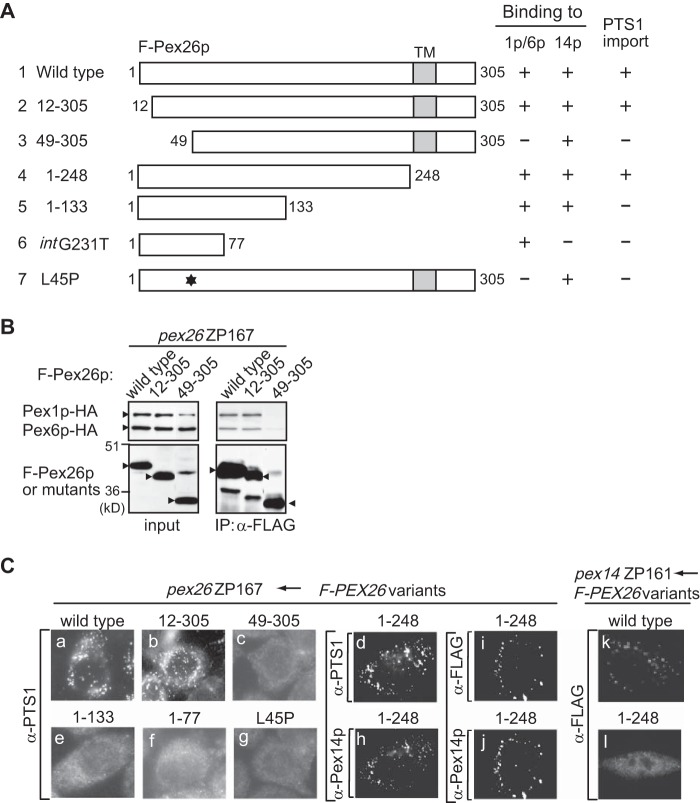FIGURE 4.
The region of Pex26p required for binding to Pex1p and Pex6p. A, schematic representation of Pex26p variants was described as in Fig. 3A. The results of F-Pex26p binding to Pex14p or Pex1p/Pex6p and the complementing activity of PTS1 import were summarized at the right (25) (this study). B, co-immunoprecipitation assay using FLAG-Pex26p mutants with Pex1p/Pex6p. FLAG-Pex26p, Pex26p-(12–305), and Pex26p-(49–305) were separately expressed in pex26 ZP167 cells together with Pex1p-HA and Pex6p-HA (25). Immunoprecipitates using anti-FLAG antibody were analyzed by SDS-PAGE and immunoblotting with antibodies to HA (upper panel) and FLAG (lower panel). C, functional domain mapping of Pex26p. Wild type and variants of Pex26p were transiently expressed in pex26 ZP167 and pex14 ZP161. Cells were stained using antibody to PTS1 peptide, and complementing activity was verified by restoration of PTS1 protein import in ZP167 (a–g). Cells were stained with antibody to Pex14p (h and j) and FLAG (i, k, and l). Bar, 20 μm.

